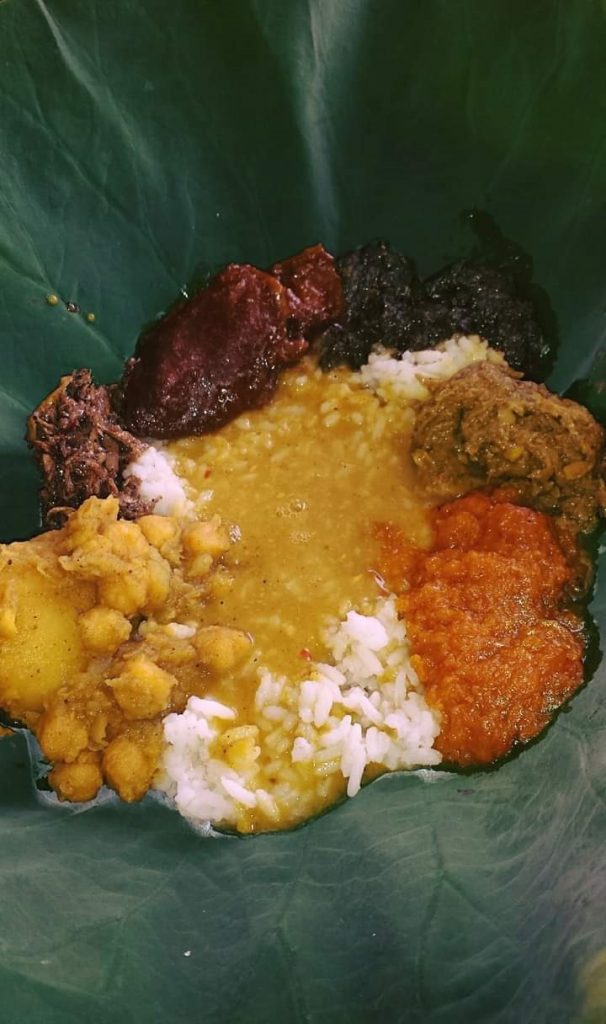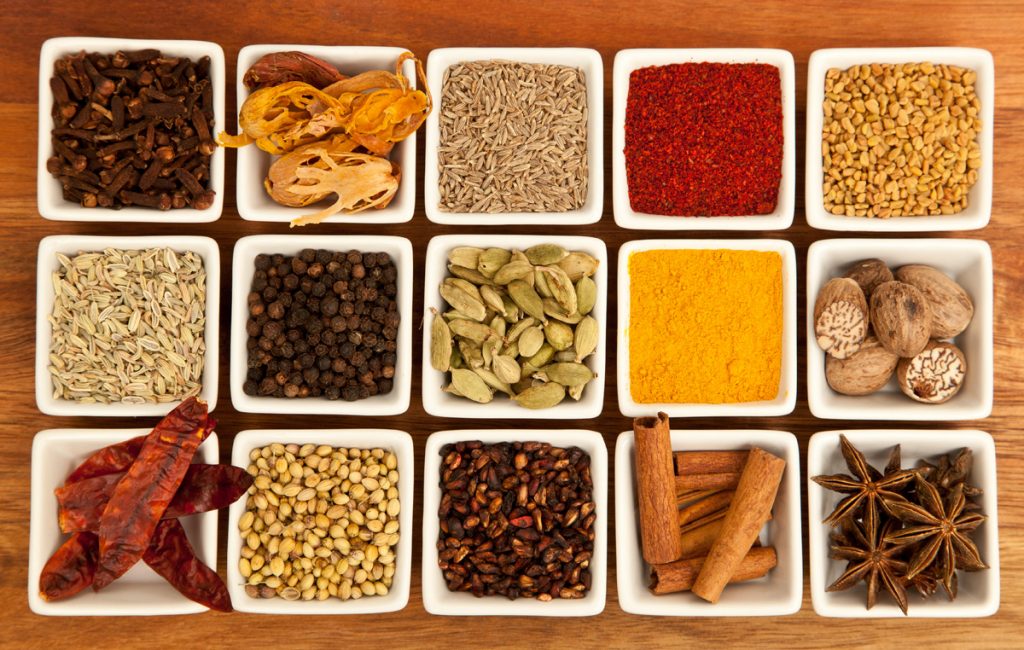 By Rupa Seenaraine
By Rupa Seenaraine
Indian cuisine is known around the world for its varying ranges of aromatic spices, which is clearly differentiated from other types of cooking. Here in Guyana, Indian food is quite common, with notable variations since it was brought to this land during the arrival of East Indians in 1838.
In India, the streets are usually bustling with merchants who market their dried spices such as cumin, masalas, chillies, cinnamon, turmeric, cardamom and mustard seeds among others. Ginger and coriander are also prevalent to achieve certain distinct tastes.
In India, there is an array of sweet and savoury dishes depending on the location. In fact, each state captures a different palate but these have been uniquely merged into one here in Guyana.
When the indentured immigrants arrived, the cooking techniques were brought from their motherland. Up until a few decades ago, these practices were well-preserved just as how the way it was done in the early era.  During a conversation with my grandmother, Homattie Seenaraine, she revealed that in her young childhood, it was a norm for Indian food to be prepared on a daily basis. On most occasions, dhal or lentils was a staple with a few curried vegetables. If rice wasn’t prepared to accompany a curry, roti or dhal puri was made.
During a conversation with my grandmother, Homattie Seenaraine, she revealed that in her young childhood, it was a norm for Indian food to be prepared on a daily basis. On most occasions, dhal or lentils was a staple with a few curried vegetables. If rice wasn’t prepared to accompany a curry, roti or dhal puri was made.
“This is what we were taught to cook. Dhal was regular food. Every afternoon, people would return from the farm and they would be made this and other vegetables, whatever was available at that time. Sometimes, dhal puri if there was enough time,” she said.
She distinctively remembered ‘seven curry’ being prepared on important events when persons from the village would be invited. It is still known as one of the most popular dishes, having seven components mainly rice, lentils, a chutney and four to five vegetable dishes all served up in a lotus leaf, which surprisingly serves conveniently as a plate.
Back in those days, the use of a mortar and pestle was quite common. The mortar was a hollow bowl, usually made of stone and the pestle would be used to crush spices and other herbs. The traditional fireside was used primarily for all cooking.
Adding to that, amchar or pickles would be made from weeks ago and stored in jars. Seasonal fruits such as mangoes would be picked and prepared to last for as long as they could by using mustard oil and other natural preservatives.
In a modernised setting, the prevalence of these foods is still widespread. However, there is an indentation caused by western influence by persons of the younger generations.
While many of the foods are still prepared, it is mostly done on special occasions, religious holidays like Holi and Diwali or just a few times a week as compared to every meal.
Of course, there are other items such as samosas, which have gained popularity through increased connection to India. In this way, other dishes are being introduced to the Guyanese strata.
“There is a lot of western influence on the Indian cooking because now it is occasional to do things that we used to do every day. People, of course, learn new ways,” she said.
Presently, many of the ingredients used in Indian cooking are sold extensively in supermarkets and local arcades. Adding to that, some spices are processed and packaged by locals, eliminating the tedious task of grinding these elements.
Sweetmeats
Barfi, kheer, gulab jamun, ladoo, jalebi and many others are the most common sweet delicacies which originated from India. Having survived many tweaks and changes in the Guyanese culture, the recipes are passed from one generation to the next.
Growing up in a very traditional home, a variety of these were prepared and distributed to neighbours on auspicious occasions. A common favourite was seemingly kheer, made with rice and milk with cinnamon, sugar and cardamom. Raisins and other dried fruits were also added.
This was served with gulab jamoon, a sweet, syrupy sphere which earned its unmistakable taste from just a few drops of rosewater. Jalebi, on the other hand, is another syrup based delicacy but models a crunchy texture.
Food has evolved to include the plethora of different cultures incorporated in the Guyanese fabric.












